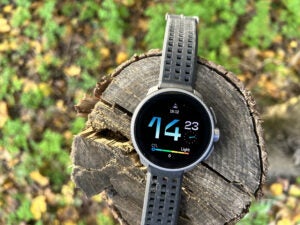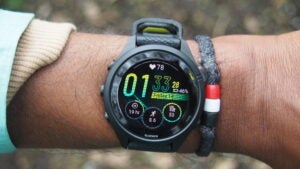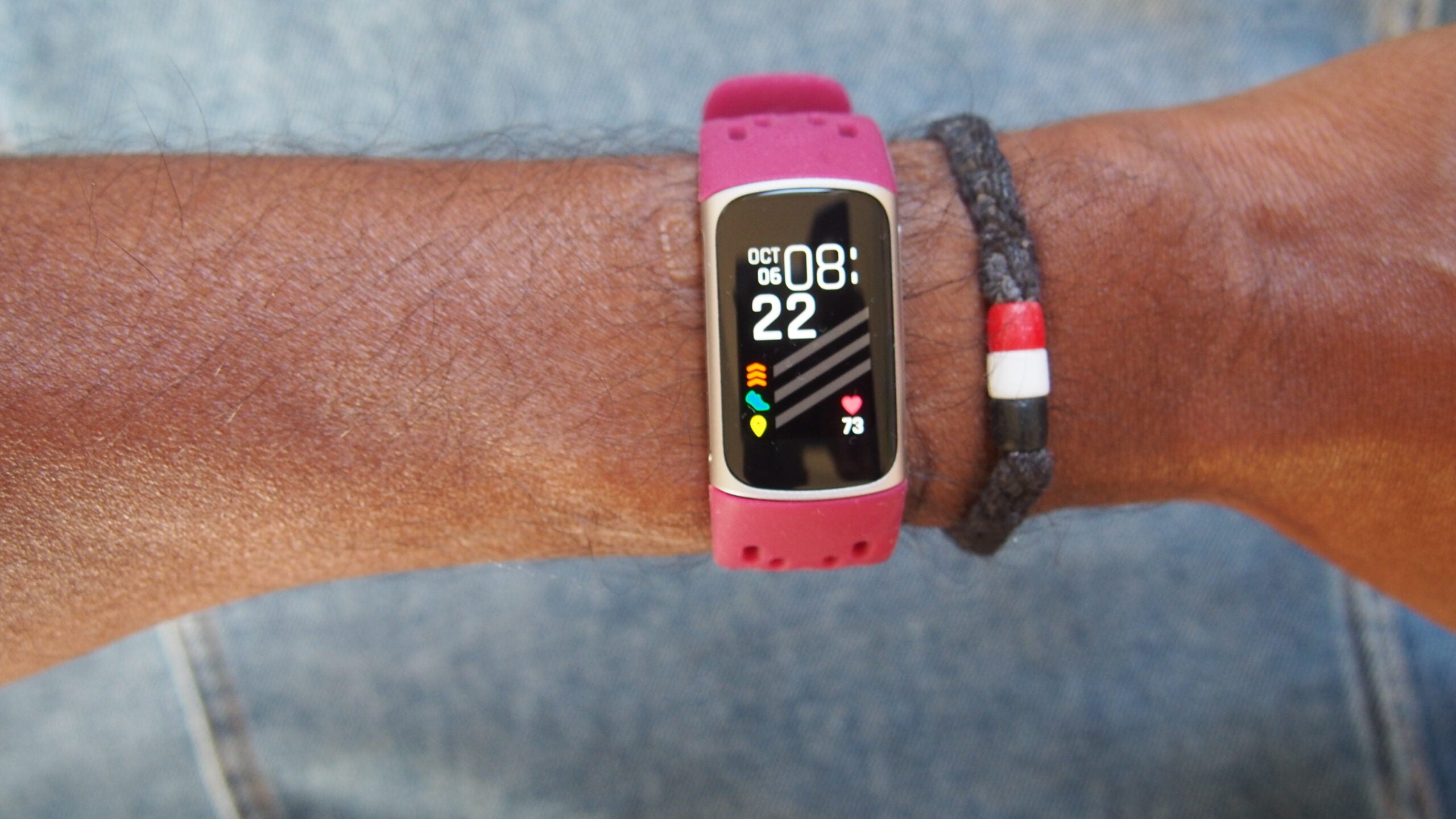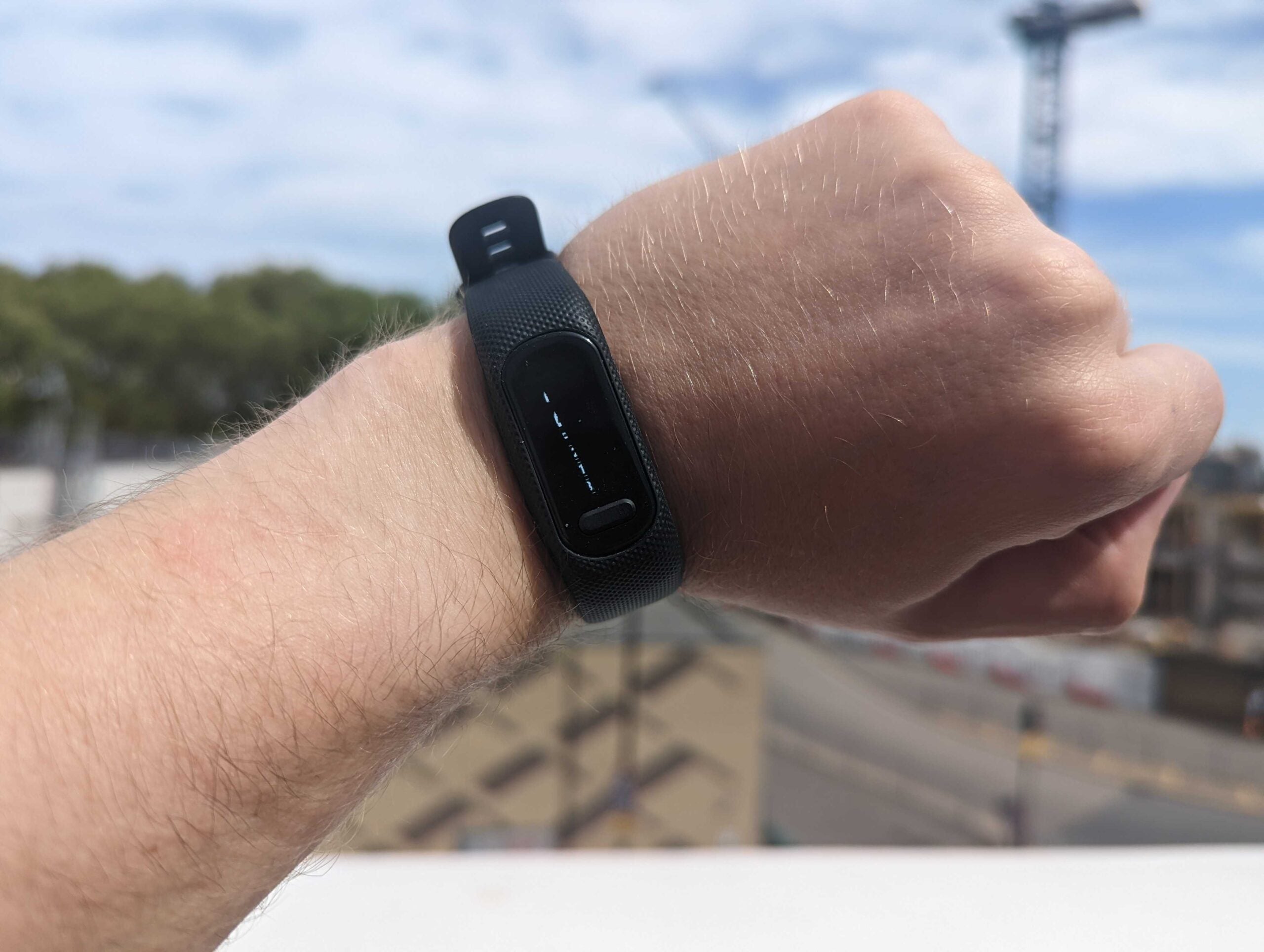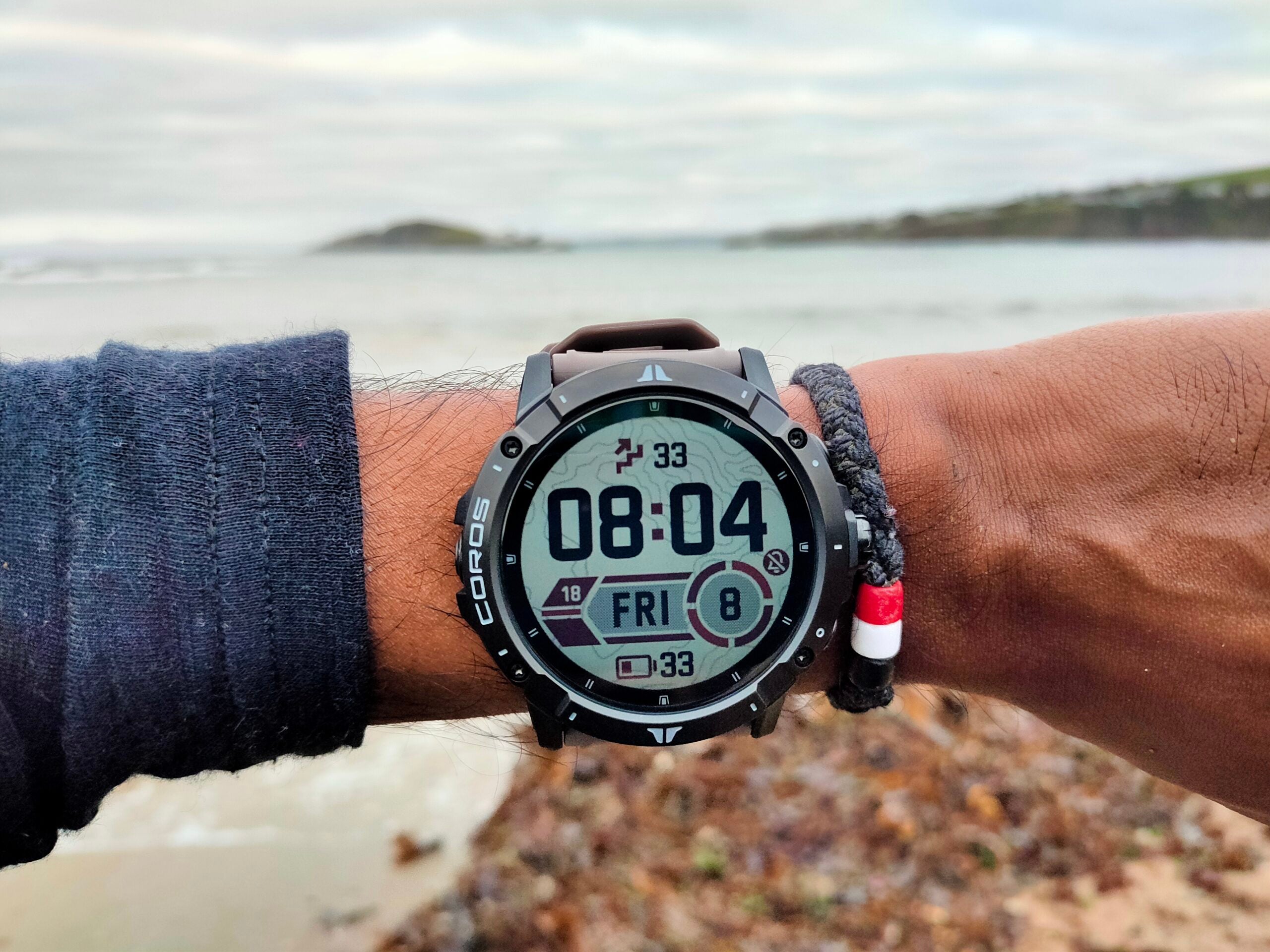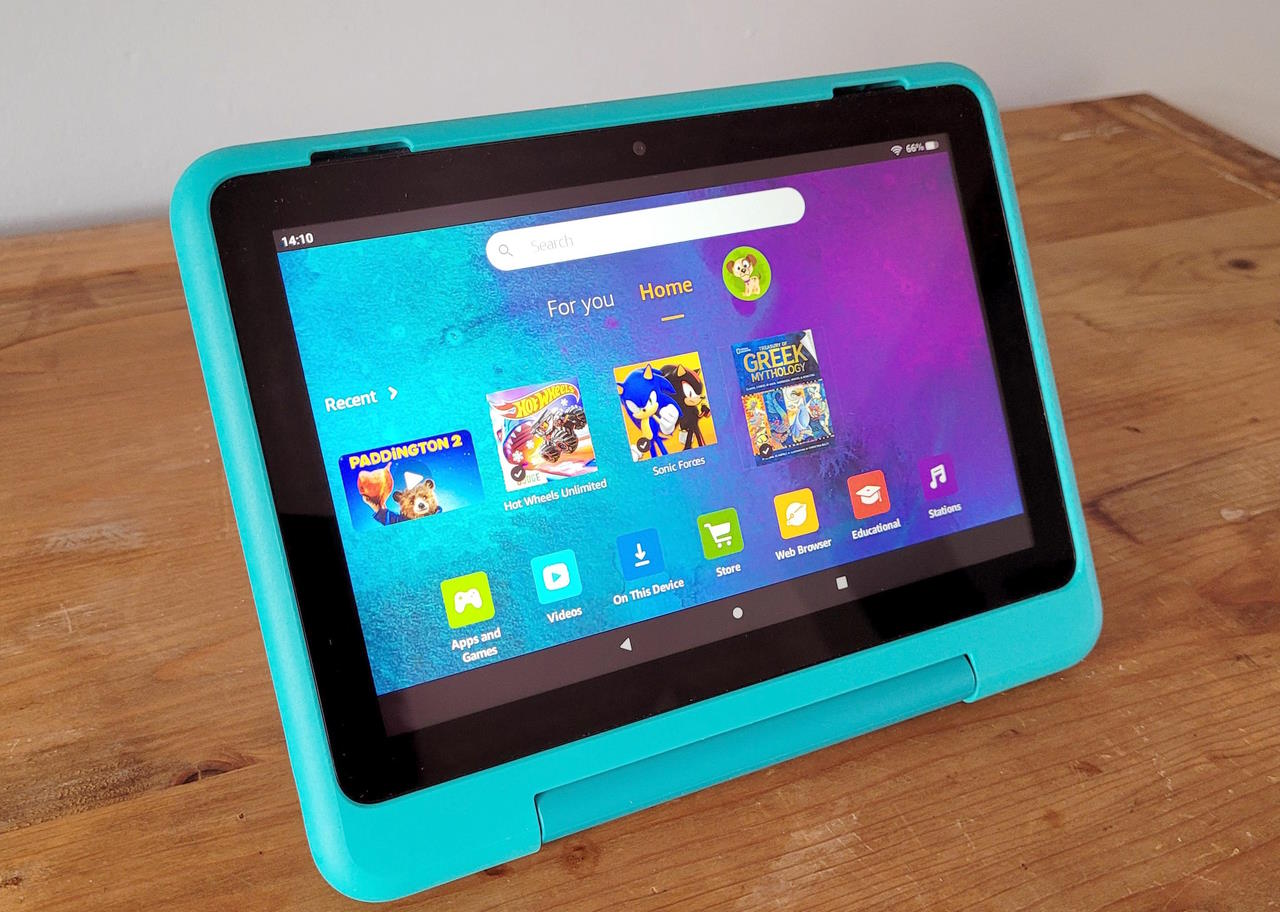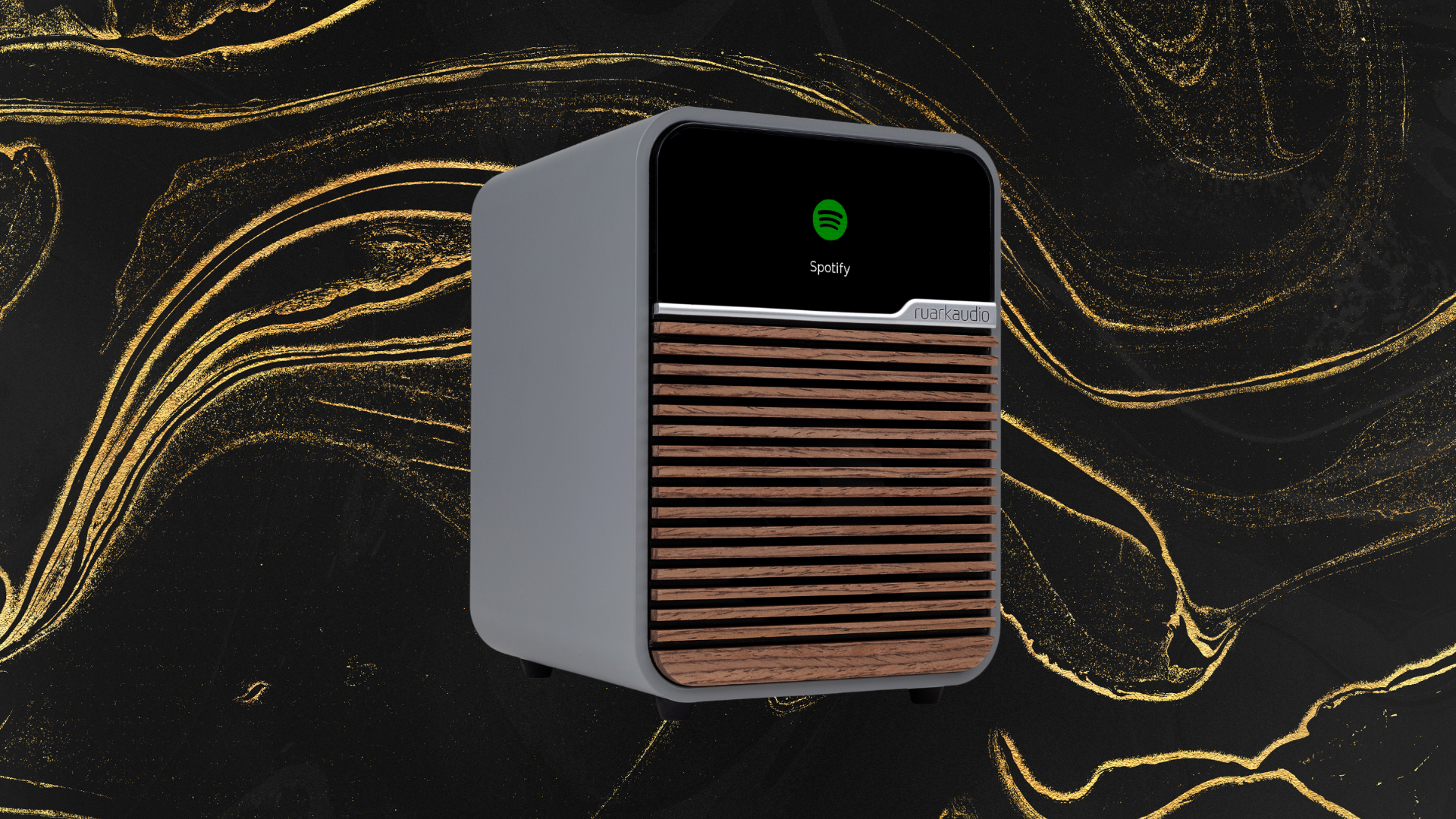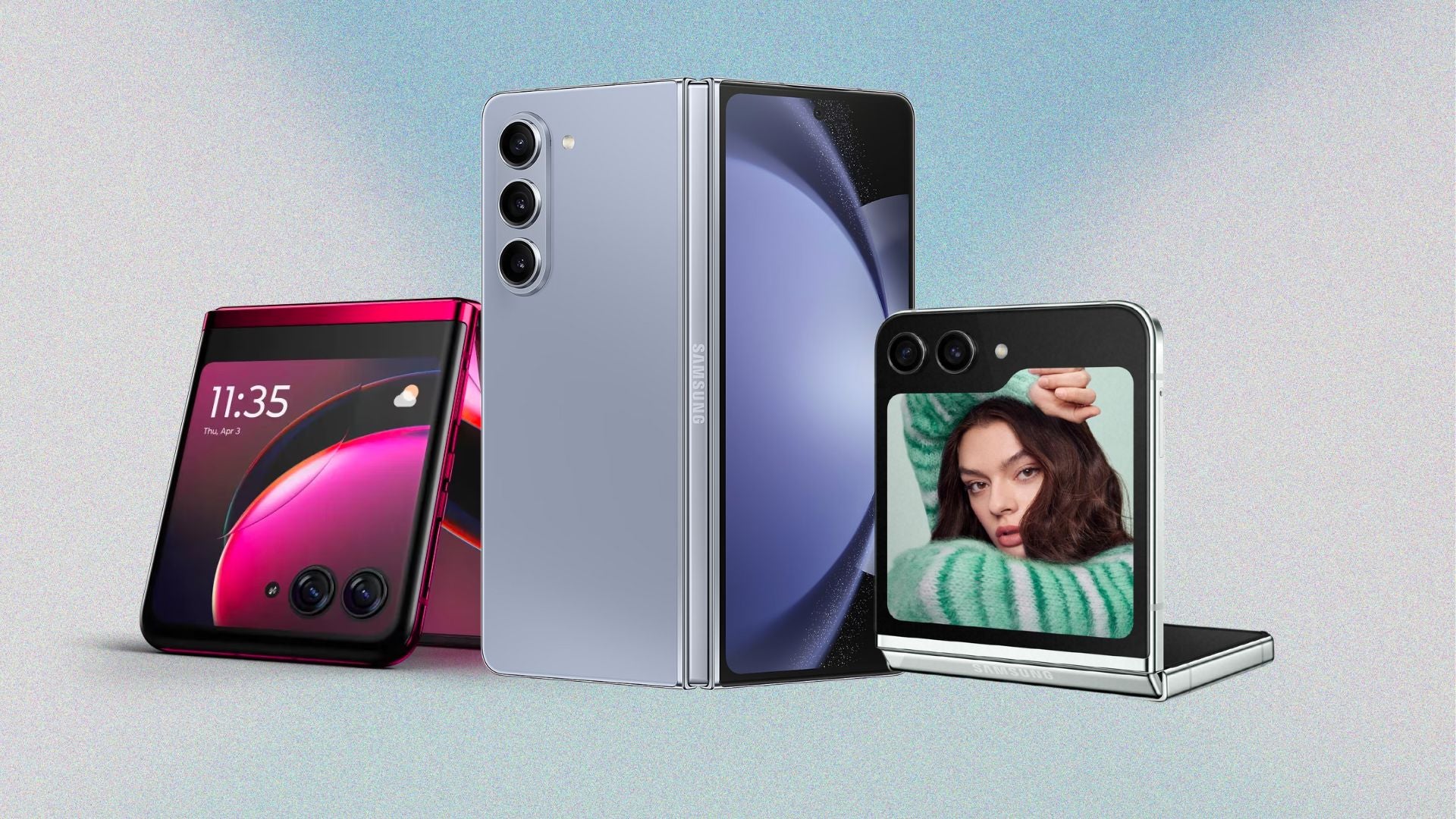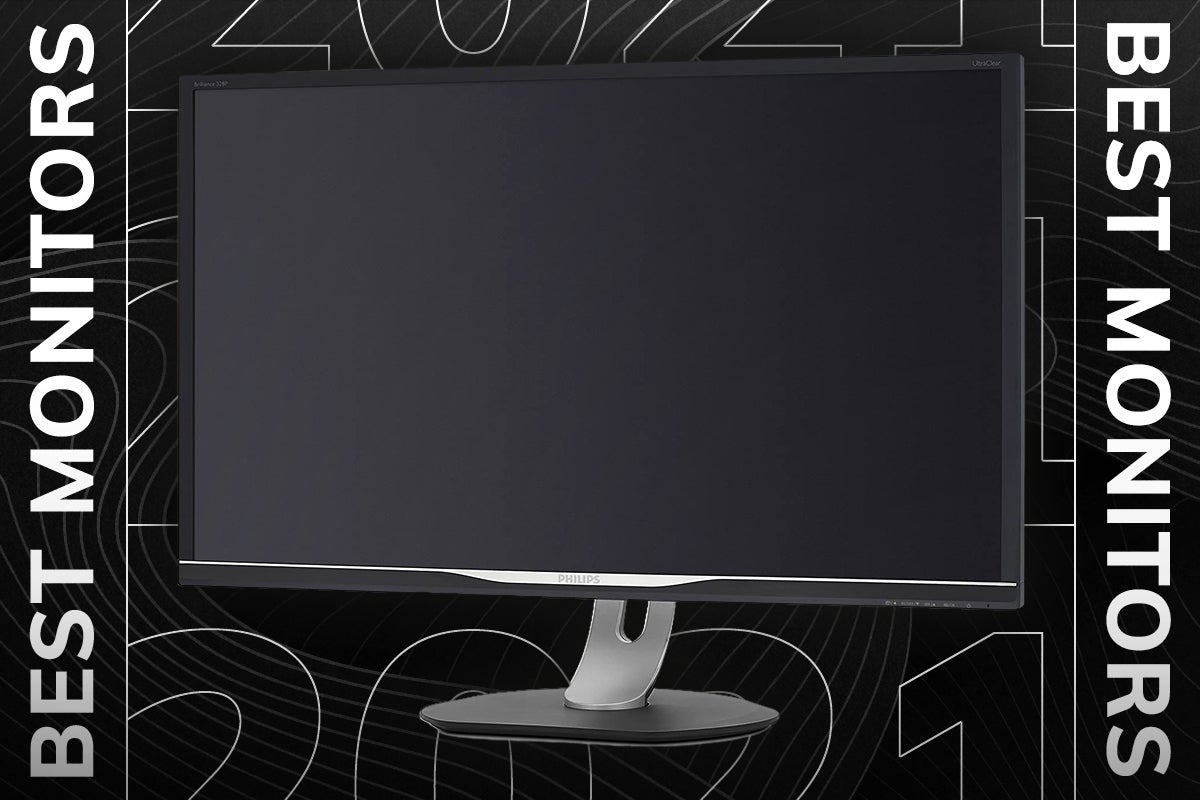Best Running Watch 2024: Top your PB with these tested wearables
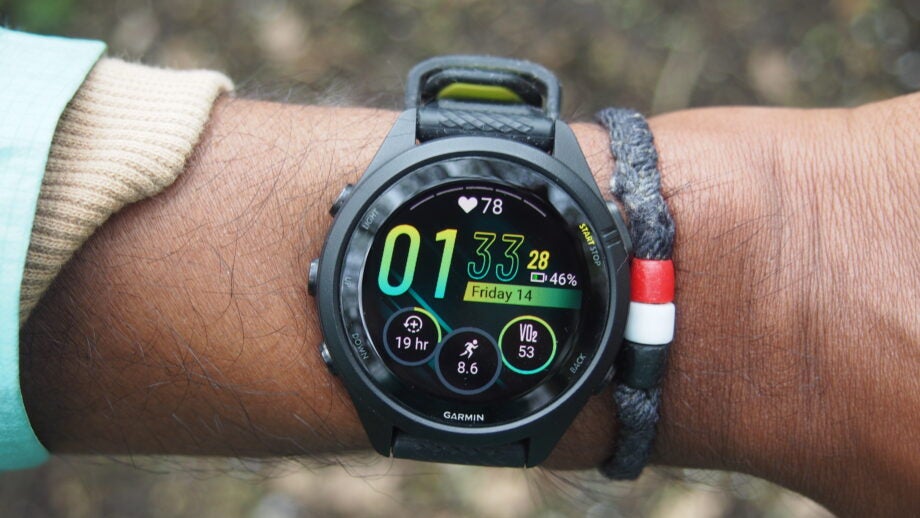
Running watches can make all the difference to your training, providing detailed insights into performance and the ability to easily track trends over time. The only real problem is deciding which one is best for your needs.
Whether you’re just getting started with the Couch to 5K program or training intensively for your next marathon, in our experience, a reliable running watch can make it much easier to keep track of and ultimately achieve your goals.
But, with so many different options to choose from, some of which can cost in excess of £1000/$1000, knowing which one to go for can be difficult – even for the most seasoned of runners.
This is especially true based on our experience. There are plenty of running watches doing the rounds in 2024 that look great but fail to deliver on key elements like tracking accuracy and battery life in real-world testing.
On top of that, if you just want a basic watch to track your treadmill runs or the odd 5km, you certainly don’t need to spend hundreds on a running watch. Many of the cheaper fitness trackers offer more than enough features to accommodate this kind of casual exercise.
Safe to say it can be confusing – but that’s where the expert team at Trusted Reviews comes in. We’ve created this guide detailing the best options we’ve tried and tested to make sure you get the right running watch for your needs and budget.
Every watch on this list has been used by one of our reviewers for at least a week, tracking indoor and outdoor runs to gauge its performance, accuracy and battery life, so you can trust our buying advice.
On the off chance you don’t find what you’re looking for you can also check out our best smartwatch, best fitness tracker and best Garmin Watch guides, which offer further buying advice.
Best running watch at a glance
- Best for serious runners: Garmin Epix Pro (Gen 2) – check price
- Best battery life: Garmin Enduro 2 – check price
- Best entry-level running watch: Fitbit Charge 6 – check price
- Best for Wear OS: Samsung Galaxy Watch 5 Pro – check price
- Best mid-level running watch: Suunto Race – check price
- Best for watchOS: Apple Watch Ultra 2 – check price
- Best for durability: Coros Apex 2 – check price
- Best for smaller wrists: Garmin Forerunner 265s – check price
- Best design: Huawei Watch GT 4 – check price
How we test
Every running watch we test is used by the reviewer for at least a week – or longer, if the battery life lasts beyond that point or we need more time to trial its features. During testing, we evaluate key metrics including app support, usability, battery life, and the accuracy of fitness and distance tracking.
For distance tracking, we assess how accurately the device records runs on tracks we know the length of. We also evaluate the level of battery life lost per hour using features such as built-in or connected GPS. To check heart rate accuracy, we compare the results from the wearable to a dedicated HRM strap.
Next, we combine the data recorded with our general experience of using the wearable day-to-day, revealing whether the device proved comfortable to wear, alongside any issues we may have encountered with unexpected bugs over the review period.
- Now comes in three sizes
- Good battery in always-on mode
- Great all-round sports tracking
- Useful flashlight
- New software features rolling back to Epix
- Not huge upgrade on original Epix
- HR sensor accuracy
- Weather overlays not used in tracking
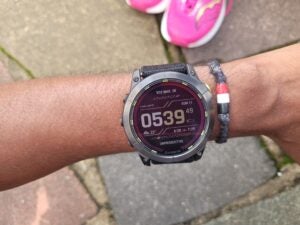 Best battery life
Best battery life
- Full-colour mapping added
- New Multi-band mode boosts tracking accuracy
- Slightly refined design
- Expensive
- Design will still be big for some
- Smartwatch battery numbers are down
- Improved design with side button return
- Google services are welcome additions
- Sleep and health tracking both shine
- GPS performance is very poor
- Sports tracking is basic
- Some features locked behind Fitbit Premium
 Best for Wear OS
Best for Wear OS
- Solid fitness tracking services
- Rugged, sports-ready design
- Wonderfully bright display
- Route planning process feels clunky
- Battery life doesn’t match rival fitness trackers
- Welcome AMOLED screen
- Solid sports tracking performance
- Battery life in always-on mode
- Watch software is laggy
- Not a great sleep tracker
- Recovery insights not massively engaging
- Top screen
- Excellent sports tracking
- The best Apple Watch
- Fitness tracking feels dated
- Lack of performance analysis
- Mapping rolling out slowly
- Top-tier titanium and Sapphire build
- Small face but great screen clarity
- Good battery life
- Sufficient number of advanced fitness features
- On-watch maps are of limited use
- Crown-led navigation can feel clunky
- Some issues with early workout HR reliability
- Vibrant and high quality AMOLED display
- Solid sports tracking performance
- Still strong battery life
- It’s more expensive than 255
- No cheaper music-free model
- Attractive design
- Slick Harmony OS watch software
- Good battery life
- New health and fitness features are a mixed bag
- App store still doesn’t match rivals
- Not a radical upgrade from GT 3

Garmin Epix Pro (Gen 2)
The best for serious runners and athletes
Pros
- Now comes in three sizes
- Good battery in always-on mode
- Great all-round sports tracking
- Useful flashlight
Cons
- New software features rolling back to Epix
- Not huge upgrade on original Epix
- HR sensor accuracy
- Weather overlays not used in tracking
Garmin has no shortage of wearables in its arsenal, so much so that if you were to approach its wares without any instinct over which one to get, the whole thing could get quite overwhelming pretty quickly. With that in mind, if you just want the absolute top dog from Garmin that can do almost anything and won’t leave you wanting when out on a run, then the Garmin Epix Pro (Gen 2) is your best bet.
It certainly doesn’t come cheap with a starting price of £829.99/$899.99 but in return, the Epix Pro (Gen 2) packs one of the most feature-rich Garmin experiences to date. For starters you get an AMOLED display which is much brighter and easier on the eyes than Garmin’s traditional memory-in-pixel panels, making this feel like a proper modern running watch.
If you’re ever running in the dark or travelling down a dimly lit trail, then you can make use of the built-in torch on the Epix Pro to illuminate the way. You won’t have to worry about it draining the battery either as the Epix Pro can run for up to 16 days on a single charge.
This is all on top of the excellent mapping features offered by Garmin, which show you detailed topography and points of interest ahead of time on any outdoor runs you want to undertake. It’s definitely overkill for most people but for the ardent athletes among you, you’ll get on very well with the Epix Pro (Gen 2).
Reviewer: Michael Sawh
Full review: Garmin Epix Pro (Gen 2) review
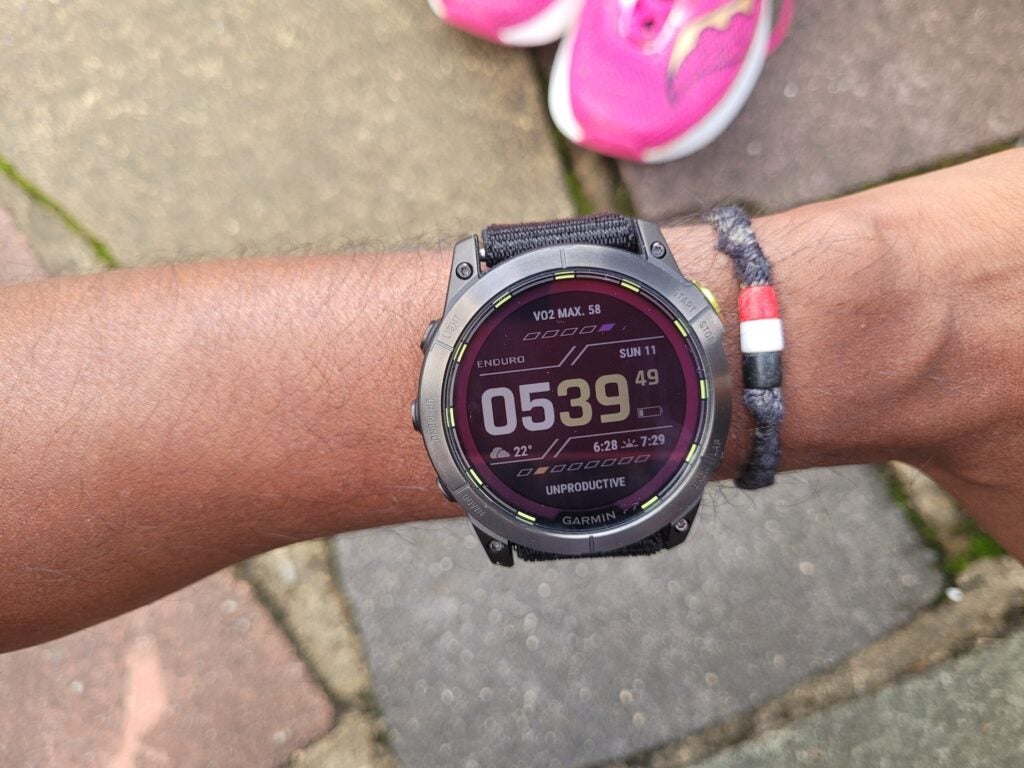
Garmin Enduro 2
The best for battery life
Pros
- Full-colour mapping added
- New Multi-band mode boosts tracking accuracy
- Slightly refined design
Cons
- Expensive
- Design will still be big for some
- Smartwatch battery numbers are down
The Enduro 2 is Garmin’s latest wearable for extreme runners. It’s also one of its most expensive. The Enduro 2 differentiates itself from the other watches on this list with its overt focus on battery life above all else.
Garmin’s designed it to offer up to 46 days of use as a smartwatch (with solar) and up to 150 hours GPS battery life (with solar). During testing we easily managed to get 3.5 weeks of heavy use out of the wearable. This included daily 5km runs with the GPS on and 10km’ jogs over the weekend.
Add to this its near indestructible design, healthy portfolio of fitness and health analytics, which are identical to what you get on the Fenix 7, accurate distance tracking and local mapping support, and the Enduro 2 becomes an easy recommendation for hardcore runners.
The only real downside is that you have to pay a real premium to get the battery life with it costing significantly more than the Fenix 7. As a result, we recommend most runners, that don’t need 150 hours of GPS tracking, to opt for the cheaper Fenix 7.
Reviewer: Michael Sawh
Full review: Garmin Enduro 2 review
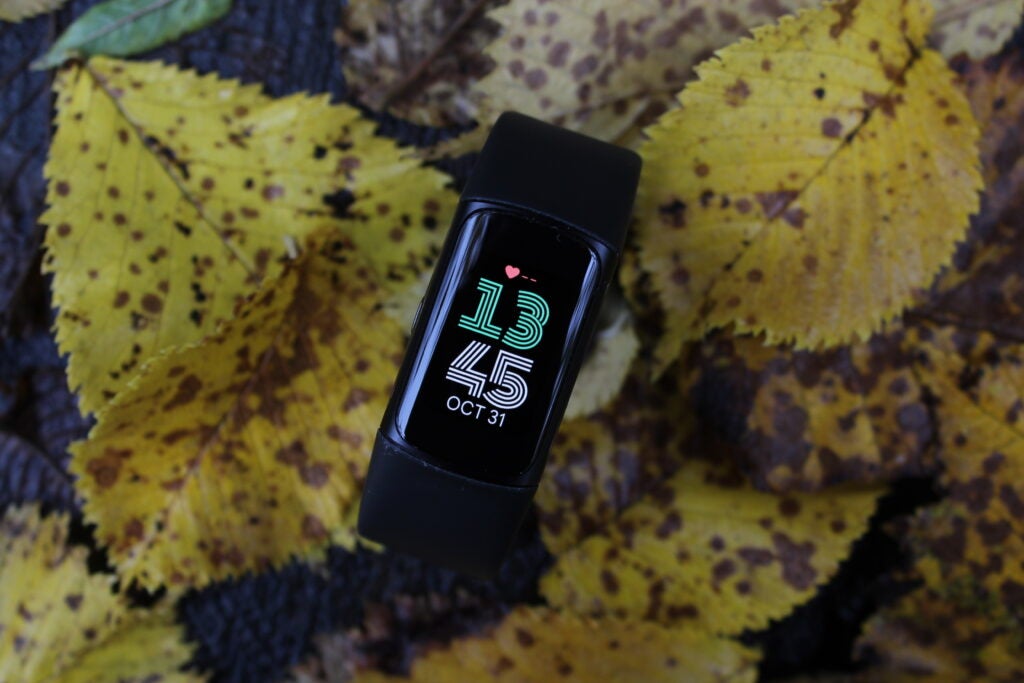
Fitbit Charge 6
Best entry-level running watch
Pros
- Improved design with side button return
- Google services are welcome additions
- Sleep and health tracking both shine
Cons
- GPS performance is very poor
- Sports tracking is basic
- Some features locked behind Fitbit Premium
Fitbit has long been adding useful features with each iteration of its popular Charge series but it’s in the Fitbit Charge 6 that the company took a major leap. With Fitbit now under the ownership of Google, the Charge 6 has made full use of the acquisition with several helpful features.
The two biggest improvements arrive in the form of support for Google Wallet and Google Maps. This means that if you want to grab a quick post-run coffee but you’ve left your phone at home, you can complete that transaction solely on the Charge 6.
The same can’t be said for Google Maps, but it is handy to have as a means of quickly navigating where you need to go next if you’re running on a route that’s unfamiliar to you. There’s also support for YouTube Music controls on the device itself.
Throw all of these additions onto the already fantastic Fitbit ecosystem and GPS route tracking, and you’re looking at one of the most fleshed out wearables within the sub-£200 end of the market.
Reviewer: Conor Allison
Full review: Fitbit Charge 6 review
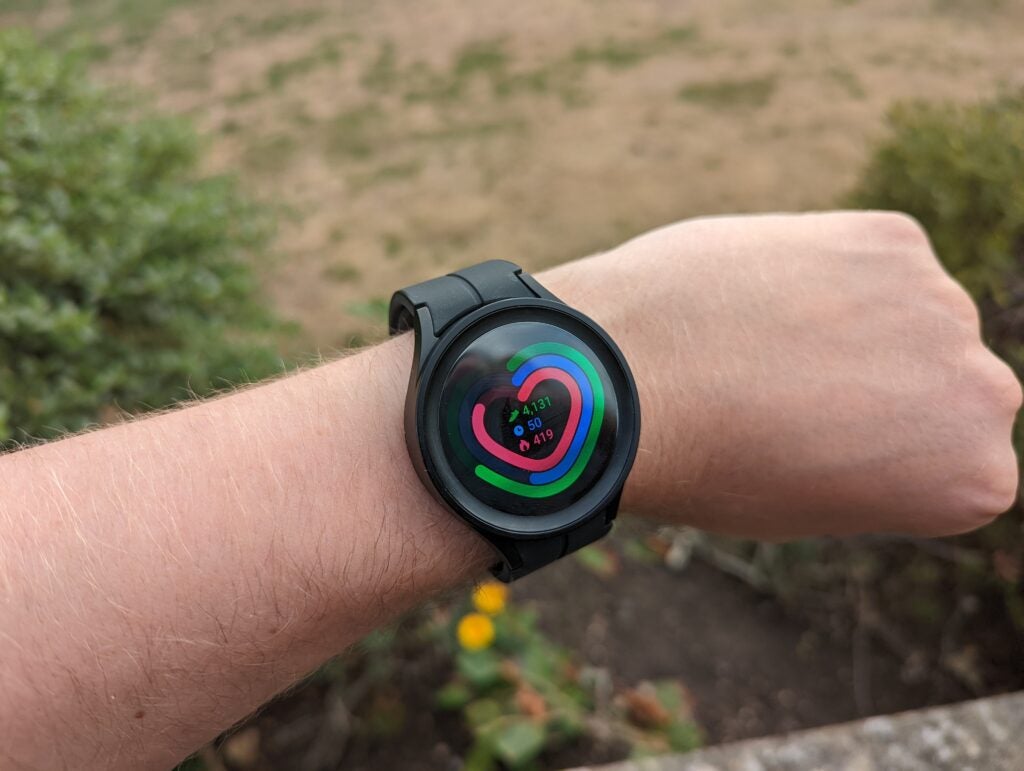
Samsung Galaxy Watch 5 Pro
Best for Wear OS
Pros
- Solid fitness tracking services
- Rugged, sports-ready design
- Wonderfully bright display
Cons
- Route planning process feels clunky
- Battery life doesn’t match rival fitness trackers
The Galaxy Watch 5 Pro is the best option for runners that want a full-functioning smartwatch too. The tracker is powered by Wear OS and that means you’ll find a much more developed application library than any of the other trackers on this list. Of course, you need an Android phone for this device, so it’s also for people who don’t have an iPhone.
There’s support for all the major running ecosystems including Strava, Runkeeper, my Fitness Pal and Samsung Health.
On top of that, you’ll get Spotify support and reliable GPS that, during our tests, proved wonderfully fast and reliable.
The rugged watch impressed when it came to analytics. The Samsung Health app offers detailed breakdowns of your running performance. These include common metrics, like how long you spent in each heart rate zone as well as more detailed ones like contact time and stiffness. It was the latter that helped our reviewer identify issues with his technique and will prove especially useful to other runners.
The only real downside to the watch compared to some of the other options on this list, like the Forerunner 955, is that the Watch 5 Pro has a distinctly shorter battery life. Like many smartwatches, our reviewer never managed to get three days of regular use out of the device.
It’s also slightly annoying that despite supporting GPX route planning, the feature doesn’t support running. Instead it’s limited to cycling and hiking. But if you want a proper smartwatch as well as a running companion and don’t like the look of Apple’s then this is the best option available.
Reviewer: Alastair Stevenson
Full review: Samsung Galaxy Watch 5 Pro review

Suunto Race
Best mid-level running watch
Pros
- Welcome AMOLED screen
- Solid sports tracking performance
- Battery life in always-on mode
Cons
- Watch software is laggy
- Not a great sleep tracker
- Recovery insights not massively engaging
Suunto’s had plenty misses in the past, never quite keeping up with the level of quality offered by the competition, but that changes with the Suunto Race. Here is a watch that not only goes head to head with the likes of the Garmin Forerunner 965 and the Apple Watch Ultra 2, it also manages to massively undercut its competitors on price.
With an RRP of £389 (and a pricier titanium version available for £479), the Suunto Race sits comfortably in the mid-range sector of the running watch market, but you’re getting plenty of bang for your buck.
For starters, it’s the first Suunto watch to boast an AMOLED display, which is bright and easy to read outdoors – perfect for the free, colourful maps that can be downloaded to the watch and used when out on a run.
Heart rate monitoring is decent enough and there’s no shortage of workouts that can be tracked beyond running, but it’s the ability to get a week’s worth of use with the screen always-on that truly sets the Suunto Race several laps ahead of the competition.
Reviewer: Michael Sawh
Full Review: Suunto Race

Apple Watch Ultra 2
Best for watchOS
Pros
- Top screen
- Excellent sports tracking
- The best Apple Watch
Cons
- Fitness tracking feels dated
- Lack of performance analysis
- Mapping rolling out slowly
It almost goes without saying but no other watch on this list can compete with the Apple Watch Ultra 2 where software is concerned. Apple’s watchOS remains the gold standard for wearable software thanks to its intuitive UI and the presence of countless third party apps in its dedicated app store.
It’s also a no-brainer for anyone with an iPhone as you’ll spot plenty of seamless integration between the two devices, and that’s before mentioning additional benefits like onboard Siri and fast pairing with other Apple products like the AirPods Pro 2.
With all of that said however, there isn’t much point in picking this device up if you already own the first-gen Apple Watch Ultra. Similar to its approach with the Apple Watch 9, Apple’s 2024 line-up is incredibly iterative with only three major upgrades to speak of: a brighter display, a faster chipset and the new Double Tap interaction.
Those features aren’t quite enough to justify an upgrade from the Apple Watch Ultra, but if this is your foray into the Ultra series, or even your first-ever Apple Watch, then the Ultra 2 is easy to recommend.
That brighter display (now 3000 nits instead of 1000 nits) is incredibly easy to read outdoors and it makes the torch function even handier when you’re running on darker trails. The new S9 chip, aside from allowing the Watch to feel faster during everyday use, now paves the way for specific on-device Siri responses, avoiding the delay that comes with pinging your requests over to your phone first.
The Double Tap feature sees Apple expand upon one of its accessibility concepts by allowing you to interact with certain apps simply by double tapping your thumb and forefinger together. This means that you can answer calls or stop timers, all without needing to touch the display which, during heavier workouts, is handy for keeping sweat away from the display.
Bear in mind that, just like its predecessor, the Apple Watch Ultra 2 doesn’t exactly topple the competition where battery life is concerned but for everything else it’s right at the top of the pack.
Reviewer: James Stables
Full review: Apple Watch Ultra 2 review
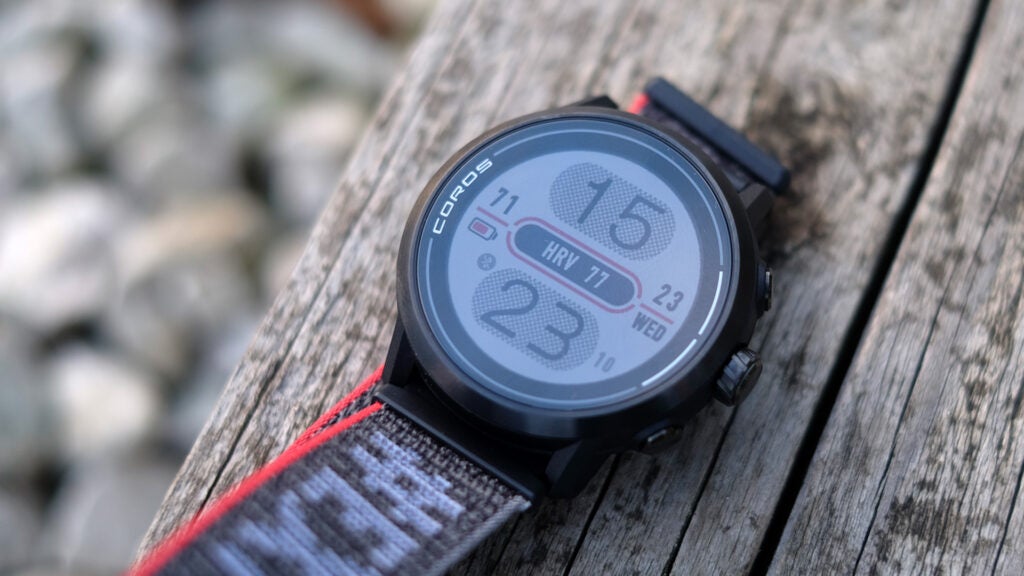
Coros Apex 2
Best for durability
Pros
- Top-tier titanium and Sapphire build
- Small face but great screen clarity
- Good battery life
- Sufficient number of advanced fitness features
Cons
- On-watch maps are of limited use
- Crown-led navigation can feel clunky
- Some issues with early workout HR reliability
Garmin and Fitbit may be the go-to reference points in the public discourse surrounding fitness trackers and running watches but Coros has been gradually making a case for its own line of wearables and the Coros Apex 2 shows exactly why the company is a force to be reckoned with.
For starters, the Apex 2 features a part-titanium chassis with a robust sapphire display, both of which are rare for wearables around the same price point. What this means is that if you’re the type of person who worries about getting scratches on their smartwatch or accidentally knocking the device during a workout, then the Apex 2 can give you peace of mind with the ability to withstand a fair amount.
As great as the watch’s durability is, it’s not the only reason why you should consider it over a Garmin. In accordance with the Coros app, the Apex 2 can offer up a near dizzying amount of metrics and you can also programme a workout routine on your phone which is then ready to be viewed whenever you need on your wrist.
All of these metrics don’t come at the cost of battery life either, as the Apex 2 can still manage to crack on for up to 17-days on a single charge, making it ideal for anyone looking to head off on a long hike.
Part of that outstanding battery life is owed to the transflective LCD screen which, even though it isn’t quite as snazzy as an AMOLED display, is by its very nature easier to read outdoors which is exactly what you want when out on a run.
The key issue holding the Apex 2 back from greatness is the on-the-watch map system which just isn’t as intuitive or easy to populate as it is on Garmin devices. If you already know the routes that you plan on running however then this won’t be much of an issue.
Reviewer: Andrew Williams
Full review: Coros Apex 2 review
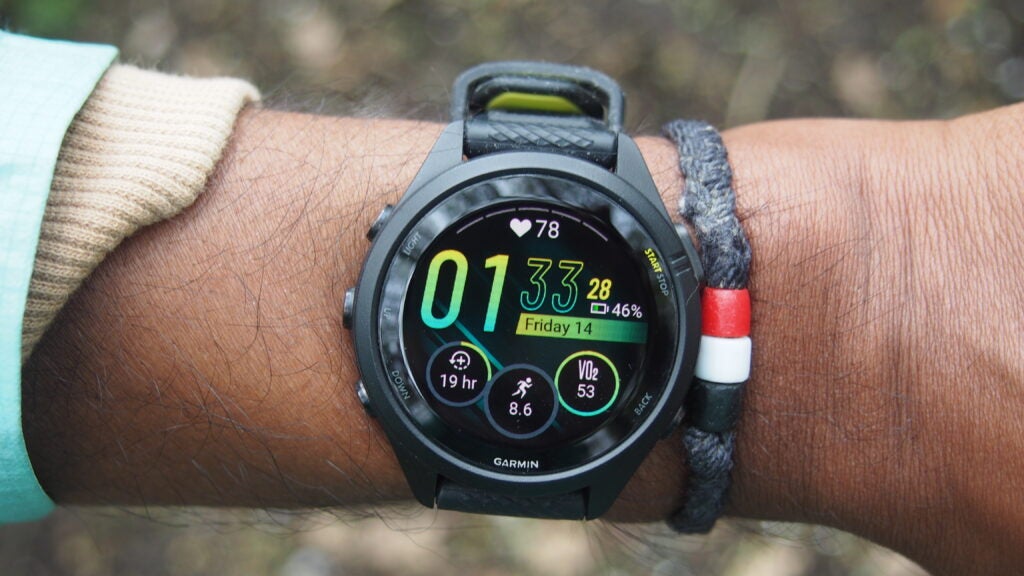
Garmin Forerunner 265s
Best for smaller wrists
Pros
- Vibrant and high quality AMOLED display
- Solid sports tracking performance
- Still strong battery life
Cons
- It’s more expensive than 255
- No cheaper music-free model
If you’re looking for a running watch that is well suited to smaller wrists, the Garmin Forerunner 265s is a fantastic choice. The smartwatch sits below the top-end Forerunner 965 but offers more advanced training metrics and features than the budget-oriented Forerunner 55.
The Forerunner 265s sports a 41.7mm case, keeping it small and light on the wrist. The watch has five physical buttons and is paired with an 18mm quick-release silicone band available in three colours.
Unlike our best mid-level running watch, the Garmin Forerunner 255, the 256s boasts a small 1.1-inch AMOLED display with a 360 x 360 resolution, an always-on mode and raise-to-wake gesture support. The screen is built from tough Corning Gorilla Glass 3 and is incredibly vibrant with deep blacks and rich, accurate colours
While the Forerunner 265s is primarily designed to support runners, the wearable also offers some swimming, cycling and indoor workout tracking capabilities. There are even profiles for skiing and snowboarding, as well as a dedicated triathlon mode.
For running, the Forerunner 265s is excellent. The wearable is small and lightweight to run with and the screen makes it easy to view and customise your stats in real-time. Many of the running features are the same as those found on the 255, including the Sat IQ and multiband GPS technology which ensure you’re using the best GPS tracking option for any environment. We found this feature performed well against similar features on the Apple Watch Ultra and Garmin’s own Forerunner 965.
Treadmill runs perform similarly well and there’s the option to calibrate the watch to ensure it offers accurate tracking on future runs.
The Garmin Coach feature allows you to sync running-focussed workouts on the watch and there’s the option to upload routes for breadcrumb-style navigation (for more complete mapping, opt for a pricier Garmin watch). Other features include the race predictor and PacePro pacing strategies, while Training Readiness offers insight based on heart rate variability, sleep quality, recovery and training load to let you know whether you should be training that day or taking a day off to rest.
Despite the new AMOLED screen, the battery life is still very good, offering up to 15-days of use in smartwatch mode with the always-on screen deactivated and up to 24-hours when using the optimal GPS tracking mode.
That Garmin Forerunner 265s may be a bit pricier than the Forerunner 255 with its coloured AMOLED display, but it’s nevertheless a great running watch and perfectly-sized for smaller wrists.
Reviewer: Michael Sawh
Full Review: Garmin Forerunner 265s review
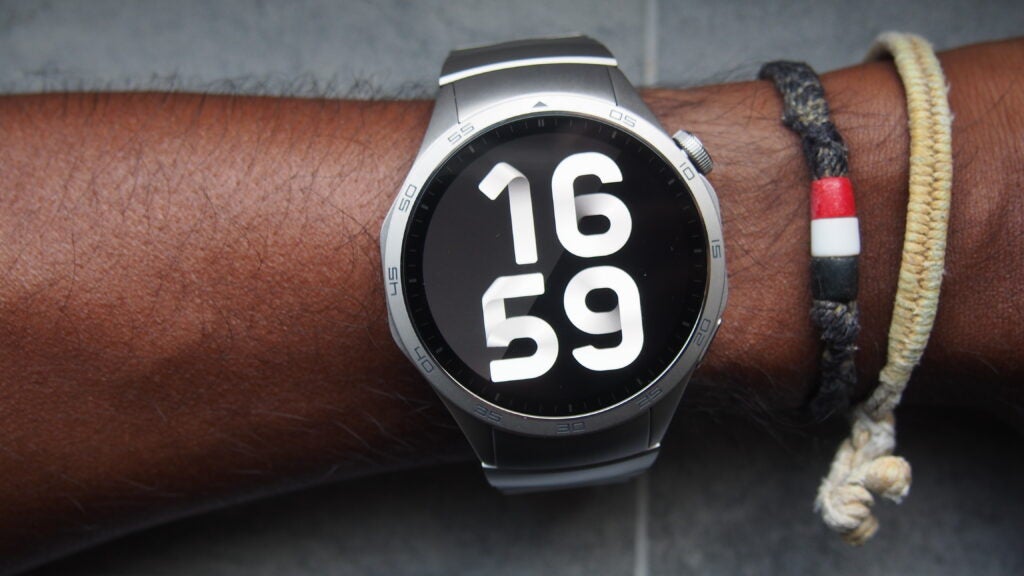
Huawei Watch GT 4 46mm
Best design
Pros
- Attractive design
- Slick Harmony OS watch software
- Good battery life
Cons
- New health and fitness features are a mixed bag
- App store still doesn’t match rivals
- Not a radical upgrade from GT 3
The one trade-off with running watches is that while they’re packed full of fitness-centric features, they tend to drop the ball when it comes to looks. There are very few running watches out there that would complement a suit or a dress, but luckily Huawei has fixed that gap in the market with the eye-catching Huawei Watch GT 4.
This latest entry serves as something of a fashion-first rebrand for the GT series as the watch comes in two size options (41mm and 46mm) and seven unique colourways. Options like the Rainforest Green GMT and the smaller Light Gold pick look more like traditional watches to the point that, from a distance, you’d be hard pressed to think that there was anything digital about them.
While they have plenty of eye-catching flair, the various GT 4 watches don’t miss a beat when it comes to fitness tracking. For starters, the GT 4 boasts Huawei’s new smart satellite antenna which allows for a better GPS connection even when the watch isn’t facing upwards
There’s also a new heart rate sensor powered by Huawei’s TruSeen 5.5 Plus technology, giving you more accurate heart rate zones when you’re out on a run to ensure that you don’t end up overtraining and increase the risk of injury.
If you’re trying to meet an ideal weight before an upcoming marathon then you may also appreciate the new Stay Fit app that lets you track your calorie intake and deficit on the watch itself. It does require a lot of manual input but if this is something that’s important to you then it is a handy feature to have.
The Huawei Watch GT 4 has a quoted battery life up to 14-days on a single chage but if you’re really putting it through its paces then that changes to around seven days of real-world use. This is still pretty good in itself, but if you do want a longer stint then you’re better off looking at some of the Garmin watches on this list.
Still, one thing that does work in the GT 4’s favour is its price point. The GT 4 starts at £229.99/€249 which is quite remarkable when you consider just how fashionable the thing is. So long as you can deal with the limitations that come with Huawei’s HarmonyOS (like its limited app store) then you’ll get on just fine with the Watch GT 4.
Reviewer: Michael Sawh
Full Review: Huawei Watch GT 4 review
FAQs
GPS lets your watch track the distance you run as well as location. If you plan to use the watch to run outdoors then we’d recommend investing in a tracker with the technology.
Not all running watches are fully waterproofed. If you need one that can survive under water you should invest in one with an ATM or IP rating. These are certifications that what depths and lengths of time a device can survive underwater.
We also considered…
Comparison specs
You can see detailed breakdown of the core specs of all the running watches included in this list. The main thing to look out for is their GPS support, if they have local music playback and key extras, such as a SpO2 sensor.




